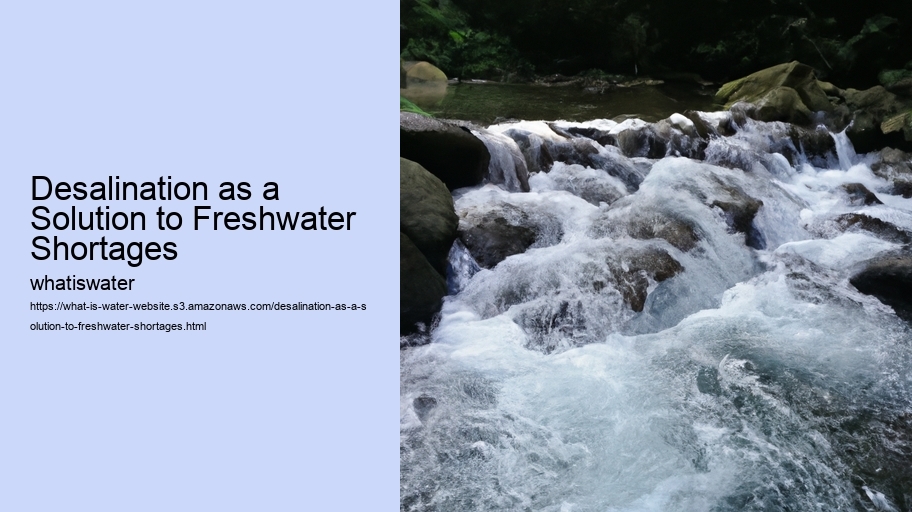The world's freshwater sources are under unprecedented stress due to factors like population growth, industrial expansion, agricultural needs, and climate change. Rivers, lakes, and aquifers are either drying up or becoming too polluted to use without extensive treatment.
Desalination as a Solution to Freshwater Shortages - Water Management
- Sustainable Water Use
- Water Law and Policy
- Water Softening
- Water Scarcity
- Marine Pollution
- Aquatic Ecosystems
In this context, desalination offers an alternative that could alleviate some of these pressures. Technological advancements have made desalination more energy-efficient and cost-effective than in the past. Water Law and Policy Reverse osmosis membranes have become more durable and better at filtering out salts at lower pressure differences. Solar-powered and wind-powered desalination plants are also being developed to decrease reliance on fossil fuels.
Desalination as a Solution to Freshwater Shortages - Wetlands
- Aquaculture
- Water Management
- Wetlands
- H2O
- Sustainable Water Use
- Water Law and Policy
Furthermore, countries with limited freshwater resources but abundant coastlines—such as those in the Middle East—have embraced desalination as a primary water source.
Desalination as a Solution to Freshwater Shortages - H2O
- Water Law and Policy
- Water Softening
- Water Scarcity
- Marine Pollution
However, there remain challenges associated with widespread adoption of desalination solutions.
Desalination as a Solution to Freshwater Shortages - Water Management
- Wetlands
- H2O
- Sustainable Water Use
Despite these hurdles, continued innovation is likely to address many of these issues over time. With growing scarcity of clean freshwater becoming an acute problem for many areas around the world, harnessing the vast amounts of seawater surrounding us seems like a natural step forward.
To summarize, while not without its drawbacks—including financial investment and environmental considerations—desalination stands out as a viable strategy in combating global freshwater shortages.
Desalination as a Solution to Freshwater Shortages - Wetlands
- Water Management
- Wetlands
- H2O
- Sustainable Water Use
- Water Law and Policy
